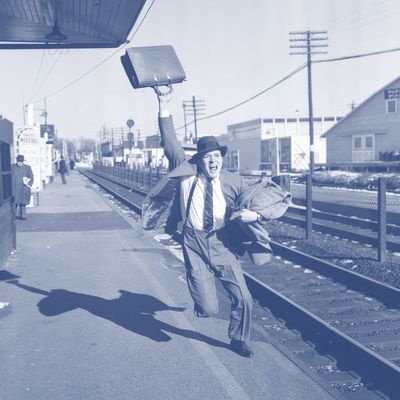
A rule that spans time and space and morning routines: It is entirely too easy to underestimate the time it takes to get to work. Maybe once — one time — it took just 20 minutes to get to work, but it typically takes 25 to 30, and you know that, but still you leave late and, thus, arrive late. It’s dumb.
It is also, maybe, human nature. As Christian Jarrett at BPS Research Digest reports, a team of neuroscientists has just uncovered a very handy if rather complicated excuse for tardiness — it seems people tend to underestimate how long it will take to travel familiar routes. The laws of time and space do not actually bend in order to transport you to work or school more quickly, but at least part of you believes that they will.
And yet the oddest part of this new study, published in the journal Hippocampus, is that the participants tended to overestimate the physical length of those routes, even as they underestimated how long it would take to travel them. It does make a certain amount of sense that people would exaggerate the breadth of familiar distances, because the level of detail you’ve stored about them matters to your memory. If you remember every Starbucks and street corner you pass on the way you usually walk to school, for instance, the walking route will likely feel longer when you recall it than one you don’t know as well. As Jarrett explains, the researchers “thought a more detailed neural representation would make that space seem larger.” And when they asked a group of students — all of whom had been living in the same building in London for 9 months — to draw a little map of their neighborhood, this is indeed what they found. The students exaggerated the physical distance of the routes they walked the most, drawing their maps a little bigger they should have.
But from there, things got strange. The researchers had predicted that if the students overestimated the physical distance between two points, they would in turn overestimate the time it would take to travel between those two points. Instead, the students lowballed their guesses for how many minutes those journeys on the familiar routes would take, telling the researchers that they’d expect to arrive at the designated destination sooner than they possibly could.
Something weird is going on here, and the study authors are not quite sure what it is. Perhaps, Jarrett writes, “there are separate neural systems for computing spatial extent and time-to-travel through that space.” Or perhaps it was the way the researchers made the students draw their maps, with “south” at the top of the page and “north” at the bottom. Maybe, Jarrett ventures, “we judge the time-to-travel through familiar routes using our experience-based knowledge, whereas drawing a ‘south-is-up’ map cannot be based on knowledge and must be freshly reconstructed from the brain’s spatial representation of the area.”
Perhaps. If nothing else, Jarrett suggests that this new finding can be used as a handy excuse for your tardiness that will baffle others into silence and acceptance. “Yes, you see, I would’ve been on time, but it’s just that the brain maintains separate neural systems for estimating spatial extent and time-to-travel through that space, so. You know how it is.”

